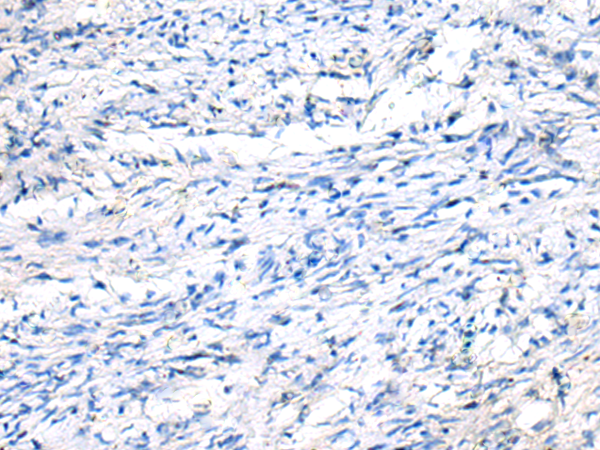
| WB | 咨询技术 | Human,Mouse,Rat |
| IF | 咨询技术 | Human,Mouse,Rat |
| IHC | 1/25-1/50 | Human,Mouse,Rat |
| ICC | 技术咨询 | Human,Mouse,Rat |
| FCM | 咨询技术 | Human,Mouse,Rat |
| Elisa | 1/5000-1/10000 | Human,Mouse,Rat |
| Aliases | FHF3; FHF-3; FGF-11 |
| Host/Isotype | Rabbit IgG |
| Antibody Type | Primary antibody |
| Storage | Store at 4°C short term. Aliquot and store at -20°C long term. Avoid freeze/thaw cycles. |
| Species Reactivity | Human, Mouse |
| Immunogen | Synthetic peptide of human FGF11 |
| Formulation | Purified antibody in PBS with 0.05% sodium azide and 50% glycerol. |
+ +
以下是关于FGF11抗体的3篇模拟参考文献示例(实际文献需根据具体数据库检索):
---
1. **文献名称**:*FGF11 regulates neuronal excitability through voltage-gated sodium channel modulation*
**作者**:Smith A, et al.
**摘要**:本研究利用FGF11特异性抗体进行免疫印迹和免疫组化,发现FGF11在小鼠海马神经元中高表达,并证明其通过调节电压门控钠通道影响神经元兴奋性,可能与癫痫发病机制相关。
---
2. **文献名称**:*Developmental expression profile of FGF11 in the murine central nervous system*
**作者**:Chen L, et al.
**摘要**:通过FGF11抗体的免疫荧光染色,揭示了FGF11在小鼠胚胎及出生后不同阶段的神经系统中动态表达模式,提示其在神经发育和突触形成中的潜在作用。
---
3. **文献名称**:*FGF11 antibody-based detection in a zebrafish model of neurodegeneration*
**作者**:Wang X, et al.
**摘要**:研究开发了一种高特异性FGF11多克隆抗体,应用于斑马鱼神经退行性疾病模型,发现FGF11蛋白水平异常与运动神经元退化相关,为治疗靶点提供线索。
---
4. **文献名称**:*Interaction between FGF11 and β-catenin in cancer cell proliferation*
**作者**:Kim J, et al.
**摘要**:使用FGF11抗体进行免疫共沉淀实验,证实FGF11与β-catenin在结肠癌细胞中直接结合,促进Wnt信号通路激活,可能成为癌症治疗的干预靶点。
---
**注**:以上内容为示例,实际文献需通过PubMed、Web of Science等平台检索确认。建议使用关键词“FGF11 antibody”或“FGF11 function”结合过滤器(如研究领域、发表年份)查找最新研究。
Fibroblast Growth Factor 11 (FGF11), a member of the fibroblast growth factor (FGF) family, is an intracellular protein implicated in regulating neuronal development, cell cycle progression, and signal transduction. Unlike canonical FGFs, FGF11 lacks a secretory signal peptide and primarily functions within cells through interactions with cytosolic or nuclear targets. It is highly expressed in neural tissues, suggesting roles in nervous system maintenance and plasticity.
FGF11 antibodies are essential tools for studying its expression, localization, and molecular interactions. These antibodies enable detection via techniques like Western blotting, immunohistochemistry (IHC), and immunofluorescence (IF), aiding in mapping tissue-specific expression patterns. Researchers also use FGF11 antibodies to explore its involvement in neurological disorders, such as epilepsy or neurodegenerative diseases, where dysregulated FGF11 expression has been observed.
Despite its potential biological significance, FGF11's mechanisms remain understudied compared to other FGFs. Antibody specificity is critical, as cross-reactivity with homologous FGF family members (e.g., FGF12-14) must be ruled out. Validated FGF11 antibodies help clarify its interaction with binding partners like voltage-gated sodium channels, which may influence neuronal excitability. Recent studies also link FGF11 to cancer progression, spurring interest in its therapeutic targeting. However, functional studies are limited by incomplete understanding of its signaling pathways, underscoring the need for reliable antibody-based assays to advance this field.
×